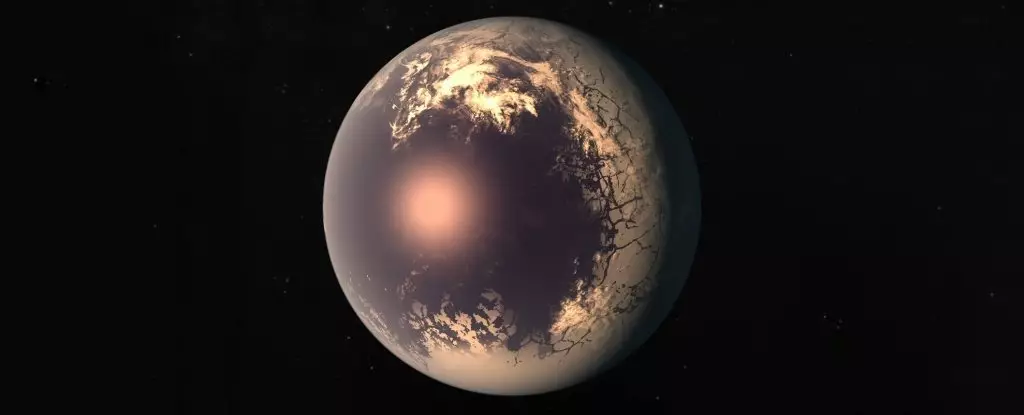Planetary scientists have recently proposed the existence of a peculiar type of exoplanet known as “Eyeball Planets.” These fascinating celestial bodies bear a striking resemblance to giant eyeballs, seemingly gazing off into the vastness of space. At first glance, this concept may appear outlandish, but it is rooted in a scientific phenomenon called tidal locking.
Tidal locking occurs when a celestial body rotates at the same rate as it orbits. This synchronization leads to one side of the planet perpetually facing its star, while the other side remains in eternal darkness. A classic example of this phenomenon is the Moon, tidally locked to the Earth, which explains why we only see one side of it.
Earth, on the other hand, is not tidally locked to the Sun, resulting in a day and night cycle. However, researchers have discovered exoplanets that are tidally locked to their stars. As a result of this juxtaposition of light and darkness, these planets experience extreme environmental disparities between their day and night sides.
In a 2013 study published in the journal Astrobiology, scientists proposed the idea of a “hot eyeball.” These planets have one side perpetually exposed to scorching heat, while the other side remains engulfed in eternal darkness. The intense radiation from the star causes the day side to become a parched wasteland, devoid of water.
However, there is a glimmer of hope for potential habitability. As glaciers on the dark side of the planet melt, water flows towards the twilight zone, creating a fertile region where vegetation might thrive. This perpetual twilight zone provides a delicate balance of temperature and sunlight for life to potentially emerge.
Another variation of the eyeball planet is known as the “icy eyeball.” These planets exist farther away from their star’s heat, resulting in a night-side covered in ice. However, unlike the hot eyeball, the day side of this planet is not arid and barren. Instead, it boasts a vast liquid ocean that could potentially sustain life, akin to Earth’s teeming seas.
It is important to note that hot and icy eyeball planets represent extreme cases. Nevertheless, any exoplanet that is tidally locked to its star is likely to exhibit stark differences between its illuminated and dark sides. These disparities might manifest as distinct cloud formations, preferential melting of ice on the illuminated side, or the freezing of water on the dark side. The possibilities are endless, and our galaxy could house an abundance of these enigmatic eyeball planets.
As we continue to explore the vastness of the cosmos, the notion of giant space eyeballs serves as a reminder of the countless wonders that lie beyond our reach. While the concept may initially seem far-fetched, it showcases the diversity and eccentricity of planetary systems in the universe. The mysteries of these eyeball planets and their potential for harboring life only further ignite our curiosity.
In the vast expanse of space, where imagination merges with scientific discovery, it is essential not to dismiss any idea as too strange or impossible. The exploration of exoplanets and the search for habitable environments stretch the boundaries of what we perceive as normal. As we gaze up at the night sky, we can only wonder what other fascinating and extraordinary phenomena await our exploration.
So, let us embrace these peculiar celestial bodies with their eerie resemblance to giant eyeballs. Who knows what mysteries they may hold, and what intriguing secrets may be waiting to be unveiled within the depths of their otherworldly gaze?


Leave a Reply